.jpg)
“WE DID IT off our own bat. It wasn't management saying 'do this', we did it ourselves because we thought it was a worthwhile thing to do, and the management accepted it.
"The sales department thought it was stupid: ‘What? A Land Rover costing two thousand pounds – you must be mad.’” So said the late Charles Spencer King of the birth of his brainchild the Range Rover in an interview given in 1995 to Australian motoring journalist Shane Nichols.
Spen King, as the Rover Company senior engineer was known, was many things, but mad he was not. When the Range Rover made its debut to a group of prominent (and almost exclusively British and European) motoring journalists in West Cornwall in 1970, it was immediately clear that here was a whole new type of vehicle. What wasn’t so obvious was the profound effect on motoring during the close of the 20th century and into the 21st century that the Range Rover would have.
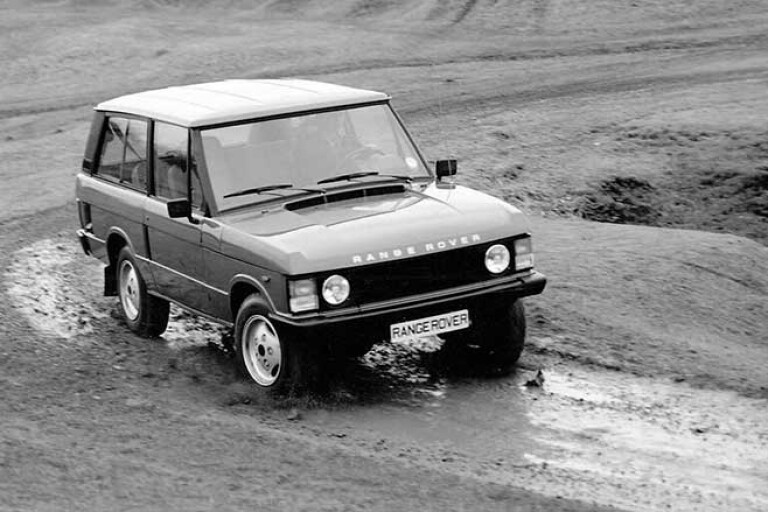
Two-door Range Rover Classic (1st gen)
Arriving in Australia in 1972 priced at $7475 – when the most expensive Toyota LandCruiser was under $5000 – the Range Rover came at a time when 4x4s where generally crude and utilitarian. Yet, the Range Rover managed to better its contemporaries in genuinely difficult off-road conditions due largely to its long-travel coil-spring suspension while at the same time providing on-road comfort and performance to shame many a luxury car.
In essence, the Range Rover did what all modern passenger 4WDs attempt to do, namely mixing on and off road performance in such a way that neither are unduly compromised.
It wasn't until Nissan launched its GQ Patrol late in 1987 and Toyota its 80-Series LandCruiser in 1989 that Japanese 4WDs approached the Range Rover’s unique blend of off-road prowess and on-road civility, and even then they fell short.
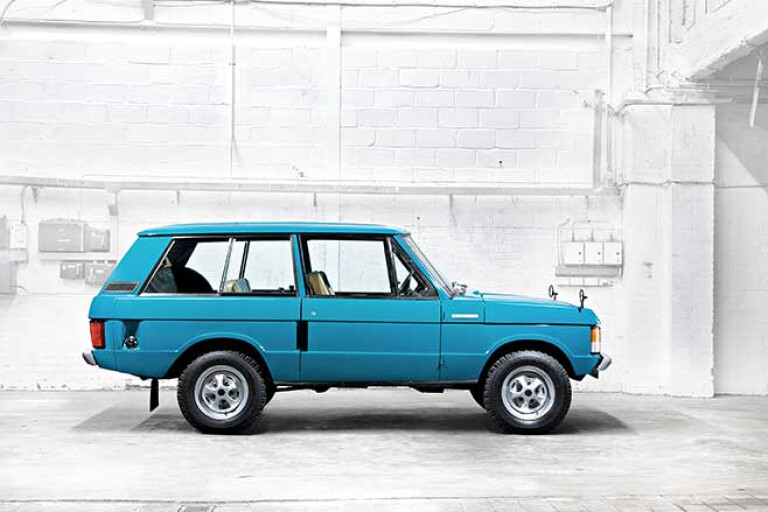
The Range Rover was quickly adopted by the gentry as the first Toorak Tractor.
THE FIRST LUXURY 4x4? NOT QUITE
THE RANGE ROVER is often called the first luxury 4x4 but that’s misleading, and wrong on both accounts. The first Range Rover wasn’t even luxurious and as for being the first 4x4 that ventured down the ‘luxury’ road that accolade is more fairly given to the original Jeep Wagoneer, which preceded the Range Rover by seven years and had some influence in the Range Rover’s conception.
Somewhat ironically the Range Rover wasn’t developed out of the Land Rover side of the Rover Company but rather the new-vehicle development unit of the passenger-car side of the company. What’s more many in the Land Rover side of the business, including Tom Barton, Land Rover’s chief engineer of the time was very skeptical of the Range Rover as he was a firm believer that 4x4s should have leaf springs.
Spen King, as the chief engineer of Rover’s new-vehicle projects, was looking for product and was interested in combining the comfort of a Rover P6 ‘executive saloon’, one of his earlier designs, with the off-road ability of a Land Rover.

Range Rover's Classic TransAmerican Expedition rig.
To this end, in 1966 King took a P6 for a drive on the company’s private test track at Solihull, effectively bumpy field, and was surprised how good it felt, remembering of course that passenger cars of the times – the mid 1960s – had a lot more ground clearance than passenger cars of today. What’s more, he was also surprised how good it felt compared to the company’s Land Rovers of the time.
At this stage the Range Rover ‘project’ wasn’t a company condoned or authorised endeavor and King and two other key members of the design team, Geof Miller, a 4x4 expert and chief project engineer, and Gordon Bashford, the chassis engineer who was involved with every Land Rover since the original Series One, worked on the project in their own time.
Rover management soon got on board however, as there was a belief that 4x4 sales would expand beyond the rural and military sectors into the recreational market where towing boats and caravans and having a vehicle just as adept at high speeds on the motorway as it was off-road could bring sales that the Land Rovers of the day could never achieve.
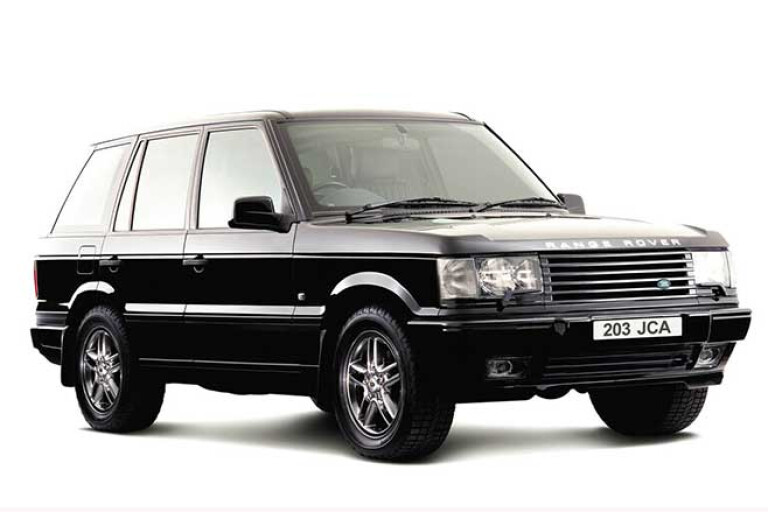
Second-generation Range Rover
The 1960s had already seen the seeds of this in the USA where the Jeep Wagoneer, Ford Bronco and the International Harvester Scout were early signs of the emergence of a new style of 4x4. The USA was targeted as potential Range Rover market but emission and safety regulations made it too expensive to comply so the idea was dropped and the Range Rover didn’t actually find its way to the USA until 1987, some 17 years after it was launched in the UK.
IMPROVED VERSATILITY
THE ORIGINAL CONCEPT of the Range Rover was never to produce a luxury vehicle but more a premium vehicle that could offer far more versatility than any of the existing Land Rovers. King listed site foremen, skiers and army officers who wanted something better than a Land Rover, as potential buyers.
It certainly wasn’t aimed at the ‘landed gentry’ as one look at the simple and utilitarian interior with its rubber floors and vinyl seats of the original would reveal. Of course it would become a vehicle of choice of well-heeled country folk but that was a role it grew into rather than being designed for.
Around this time, and very fortunately so, Rover had already agreed to buy the tooling and blueprints for an all-alloy 3.5-litre V8 from Buick for Rover’s passenger cars. This was timely as the Land Rover’s existing 2.5-litre four-cylinder and 2.6-litre six-cylinder engines wouldn’t have given the Range Rover the 145km/h-plus motorway speeds and heavy towing capacity that was envisioned for the Range Rover.
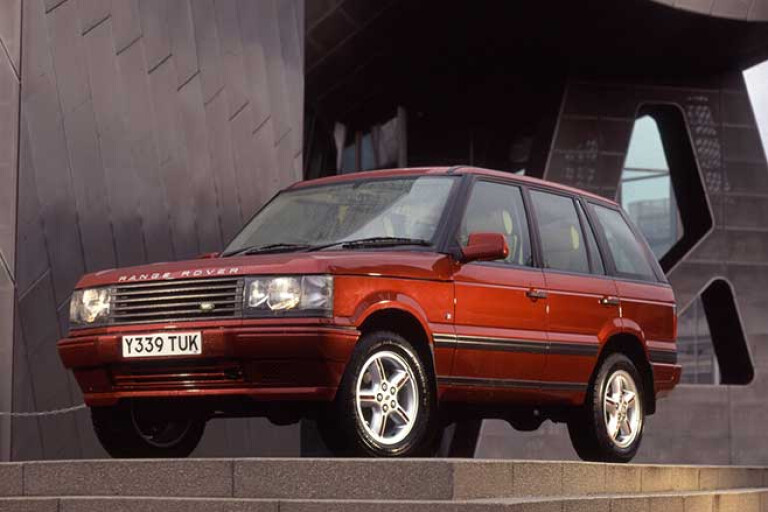
The second generation ran from 1994-2002.
At that time within the Rover Company the Land Rover was still seen as the stopgap measure it was originally designed as, and its development was still slow paced and underfunded, hence the lack of a more modern engine in the Land Rover stable until the Buick V8 came along.
The first prototype was built in 1967 using a Land Rover chassis and many Land Rover parts including the part-time transfer case, Land Rover axles, and drum brakes. But the springs were adapted from the Rover P6, and the rubber mounts to isolate the body from the chassis also came from a Rover passenger car, as King was keen to achieve Rover passenger-car NVH levels with the Range Rover.
The second prototype moved the game on considerably introducing full-time 4x4 and disc brakes. It also brought the Boge Hydromat self-leveling strut, which helped maintain the vehicle attitude when heavily laden, something that’s essential when you have soft, long-travel springs. For the first 20 years of its life the Range Rover didn’t even employ anti-roll bars, which allowed the suspension to work freely through its full travel off road.
FULL-TIME 4x4
THE DECISION TO use full-time 4x4, in retrospect a breakthrough design, came about as King wanted to use Land Rover axles rather than heavy-duty truck axles as these would ruin the on-road handing due to the extra unsprung weight. The trouble was the extra torque from the V8 might be too much for the lighter axles, so by using full-time 4x4 the drive torque was spread front to rear.
As King was to say some years later: “You have the rotating machinery at both ends so you may as well use it. It saves on tyre wear and confers better grip – a prime safety factor. The security on slippery, nasty roads is just wonderful.”
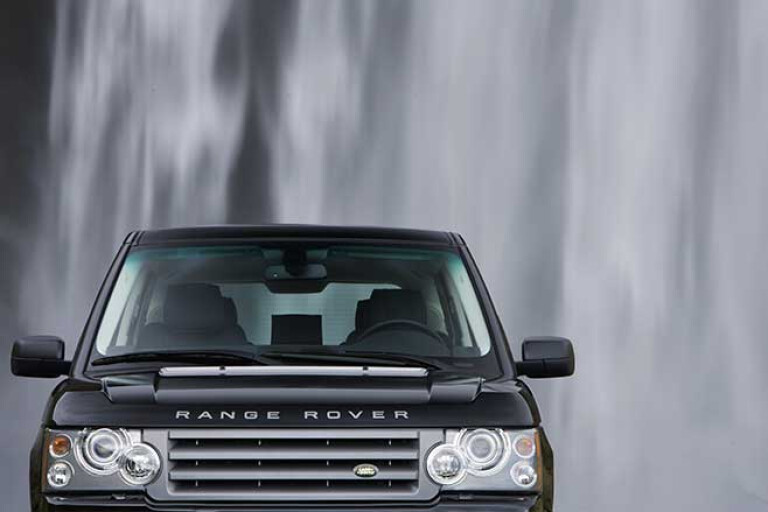
Third-gen Range Rover.
As the project moved from design to development, King was offered a more senior position within the then new British Leyland group and departed the Range Rover project content in the knowledge that “it was going to be a successful and iconic vehicle”. From there it was up to the development team to take the Range Rover to production, among them Roger Crathorne, who within Land Rover circles is still today referred to as ‘Mr Land Rover’.
The third prototype that came along was built in 1969 and produced what is more recognisable as the initial production model. Initially Rover’s head of styling, David Bache, wasn’t keen on the car and King did much of the initial work himself. Then King ‘borrowed’ a stylist – Geoff Crompton – from the styling office without Bache’s knowledge. Crompton helped with the styling and eventually Bache helped to finish it off and, in King’s words, “did a great job”.
Much of the design was centered on making the vehicle as compact as possible to make it more useful off road. Hence the relatively short wheelbase (better ramp-over clearance) and short front and rear overhangs for better approach and departure. The only dimension that wasn’t kept to a minimum was the roof height, deliberately so to allow the driver and passengers to sit upright and look through an enormously deep glasshouse. Even to this day there’s not a 4x4 that offers anywhere near the vision of the original Range Rover.

Range Rover third generation.
Initially the whole body was to be made from aluminium-alloy panels but the complex shape of the bonnet required steel. Steel was also used for the rear window frame for strength.
Developed at a time of much turmoil as the Rover Company was merged into British Leyland in 1967, the Range Rover went from concept to production in four years, and in the final year was rushed even faster as the then British Leyland chairman Sir Donald Stokes wanted a new car every six months! This bought the release date forward to mid-1970.
Most of the prototype testing was done at the Motor Industry Research Association (MIRA) test centre and at Rover’s off-road proving ground at Eastnor Castle. Hot-weather testing was done in North Africa in 1969 and, while cold-weather testing was done in simulators in England, an official cold-weather test – in Finland – wasn’t conducted until after the Range Rover went on sale! In the words of Crathorne “fortunately it did well!”
DON’T FORGET THE ASH TRAY
MISTAKES were made along the way. As none of the design team were smokers there was no ashtray and that was only added as an afterthought. During severe on-road testing the rear diff nose also fouled the A-frame, which meant a sight redesign of the brackets and trailing links just before the sales started. A few vehicles that had had already left the production line had to be retrofitted with the changes. The torque-sensing centre differential proved noisy and was phased out after a few hundred units to a manually lockable non-torque-sensing unit.
The idea behind the two-door body was essentially for strength and while this was well received in the UK it wasn’t liked in the Middle East by wealthy sheikhs or in Africa by rich leaders who generally had chauffeurs and found it was somewhat unbecoming to have to clamber into the back seat. Still it took 11 years after the initial launch before the four-door appeared.

Range Rover PHEV features an Ingenium petrol engine and electric motor.
The export market was important for the Range Rover and played a significant part in making the Range Rover more globally influential than the Jeep Wagoneer and Ford Bronco, significant as they were in their own right.
Given the huge domestic market, USA automakers weren’t as export orientated as Rover where the success of the Land Rover right from the beginnings in 1948 was based very much on export off the back of commercial networks established in British Commonwealth countries such as Australia. This was an advantage the USA automakers didn’t enjoy.
Despite its many fiddly flaws and rushed development the soundness of the original design was well vindicated as the Range Rover’s core elements – long-travel coil-spring suspension, full-time 4x4 and flexible V8 power – remained essentially unchanged throughout its 26-year production run.
References: Born in Lode Lane by Roger Crathorne with Gavin Green; Suspension King – How it all Began by Shane Nicholls in Range Rover, A History.
CHARLES SPENCER KING
CHARLES Spencer King (1925-2010) was far more than the father of the Range Rover, a fair claim to fame by any measure.
His life as an engineer started in wartime England in 1942 as an apprentice with Rolls-Royce, arguably the pinnacle of British engineering at the time – Spitfire fighter-plane engines and all that – but at the end of the Second World War he moved from aeronautics to the Rover Car Company where he joined his uncles, Maurice and Spencer Wilks. Maurice Wilks was responsible for the original Land Rover that debuted in 1948.

At Rover, Spen King worked on the Jet1 and T3 gas-turbine cars and led the teams that developed the innovative Rover P6 and the SD1 passenger cars.
He was also involved in the Rover-BRM gas-turbine racing car that competed at and finished the 1963, 1964 and 1965 24-hour endurance races at Le Mans. He also led the development teams that created the Triumph Stag, and the Triumph TR6 and TR7 sports cars, and designed the famous 16-valve head for the Triumph Dolomite Sprint.
He retired in 1985 but not before heading up a British Leyland advanced research team tasked with designing vehicles of the future, including the ECV3, a lightweight aluminium space-frame three-cylinder hatchback that used as little as three litres of fuel per 100 kilometres. He is remembered as an engineer's engineer for his pragmatic, down to earth approach to problem solving.

COMMENTS